They’ve used talent, grit and endless determination to earn their wings.
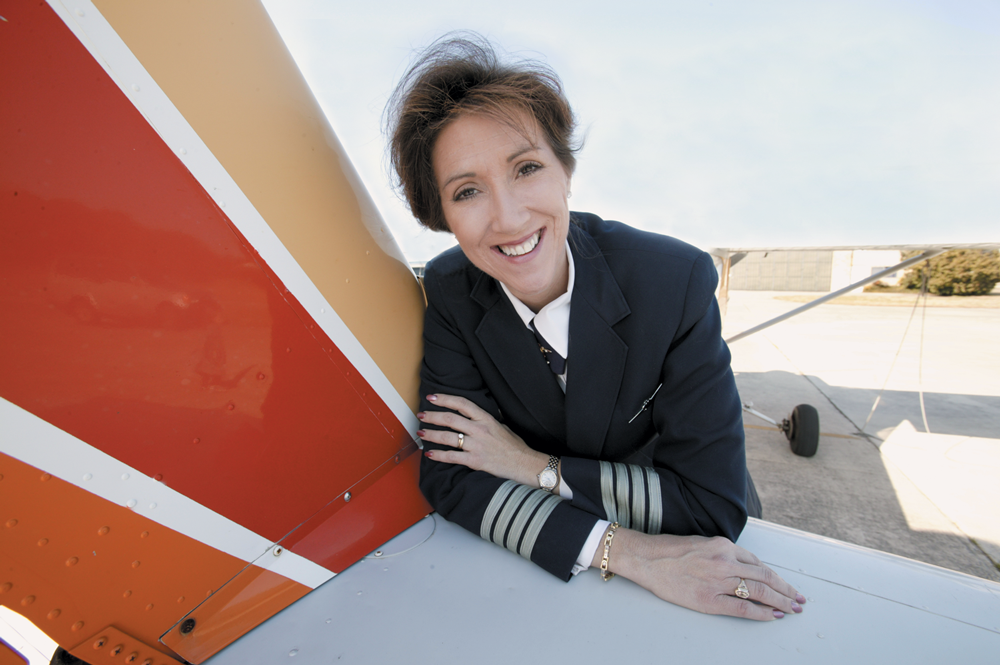
Some members of San Antonio’s fair sex give new meaning to the term “uppity women.” They are the ones who, despite all odds and opposition, continue the San Antonio woman’s love affair with the Wild Blue Yonder. It began in 1913, the year Katherine Stinson and her mother, Emma, opened Stinson Aviation Co. in the Alamo City.
Born in Alabama in 1891, 12 years before the Wright brothers made their first successful flight, Katherine Stinson set her sights as a young woman on an earthbound life course: She wanted to study music in Europe so she could become a piano teacher.
But you can’t keep a nonconformist down.
As a quick way to earn the $1,000 she needed for the sojourn to Europe, Stinson decided to become one of those daring barnstorming stunt pilots she had read about in a magazine. In 1912, she asked Chicago aviation pioneer Max Lillie to teach her to fly. At first, he refused.
After she persuaded Lillie to take her on as a student, she had only to convince her father that flying was a good idea, and to get him to pay half of her flying-school tuition. She raised the other half by selling her piano. She became the fourth woman in the world to obtain a pilot’s license.
Stinson was the first woman — and the fourth person — to master the perilous loop-the-loop maneuver. She was the first pilot to fly a plane at night, the first pilot to perform nighttime skywriting, the first woman to fly in Asia, and the first woman commissioned by the U.S. Post Office to fly mail.
Her younger siblings — Marjorie, Jack and Eddie — also adopted flying careers in San Antonio, where Stinson’s mentor, Lillie, had gained permission from the U.S. Army to turn the parade grounds at Fort Sam Houston into a flying field.
Following today in Stinson’s footsteps are three San Antonio-area wives and mothers — Nancy Bruce and Tammy Jo Shults of Southwest Airlines and Olga Custodio of American Airlines. They are part of that elite sorority of women pilots who are flight captains in charge of major U.S. commercial airliners.
American Airlines has 12,000 pilots; 582 of them are women. Among that airline’s 6,003 captains, 80 are women. At Southwest Airlines, women comprise 6 percent of the total pilot roster of 4,120. A total of 57 first officers are women; 59 are captains.
Bruce, Shults and Custodio have other things in common with their famous high-flying predecessor: They believe that anything they can dream, they can do; they decline to take “no” for an answer; their intelligence is equal to their determination; and they have the support of their families.
Nancy Bruce
Nancy Bruce was the second of four girls born to Jacqueline and Gilbert Falbo, owner of G.P. Falbo Corp., one of the largest construction companies in Texas specializing in water, gas and sewer mains.
“My father wanted sons, so he tried to turn us into boys,” Bruce says. “He reared us to be able to out-think and out-do men. The first thing I learned to drive — when I was 12 years old — was a double-decker bus. Later on, I didn’t consider a plane intimidating machinery at all.”
As a student at Ursuline Academy, Bruce took a test to help her choose a career path. “It said I was supposed to be a mechanic. I used to do maintenance, like changing the oil in a Cessna,” she said.
To counterbalance the skills Nancy was learning from her father, Jacqueline Falbo, “a traditional Italian homemaker — and the perfect mom,” enrolled her daughter in the Ben Shaw Modeling School.
“I worked with Ben Shaw for a number of years,” Bruce says. “At 5 feet 5 inches, I was too short to be a runway model, but I taught modeling and did photographic work and TV commercials.” She also sang and played keyboard with a rock band called Honest Pleasure.
In 1977, when Bruce was 22, Gilbert Falbo paid for his daughters’ flying lessons. “My sisters hated it, but I loved it. I found out I could do a lot of little things O.K. But flying was something I could do well,” she says.
After earning private, commercial, instrument and flight-instructor certification, Bruce worked as an instructor with the Texas Flying Club. Her future husband, Robert Bruce, owner of United Audio Recording studios, was one of her students.
After working at Texas Flying Club for a couple of years, Bruce established her own flying school. “My husband and my father bought me a Cessna 150,” she says. “One plane grew into seven, and other flight instructors were hired.”
But the flight school routine became less than satisfying. “I needed greener pastures. I wanted to fly jets,” Bruce explains. She sold her school and went to work full time as a pilot of corporate jets. But her ultimate goal was piloting for Southwest Airlines. For that, she needed a Boeing-737 rating. Her husband and her father sent her to school in Canada.
In 1985, Bruce was hired by America West, where she gained 737 experience, and on Jan. 13, 1987, she was hired by Southwest. “Walking down the hall to that interview, I felt like I had come home. I still have that same feeling. It’s never left,” she says.
In 1991, Bruce was promoted to captain. She also serves on Southwest’s interviewing and hiring committee.
Bruce and her husband, a sailplane operator with 2,500 hours of glider experience, own the Boerne Stage Airfield. She has a 28-year-old daughter, Emily Glisson, and a 1-year-old grandson, Joshua, “who is the love of my life.”
Bruce has nothing but praise for the men she works with. “But women do have an advantage: they can multi-task. I can fly a plane, chew gum, talk on the radio and do my nails, all at the same time,” she jokes.
She also gives a light response to passengers who see her in the cockpit and ask, “What’s she doing up there?” “Oh, just a little light typing and answering the phone,” she tells them. But she is tolerant of the sexual bias many people are unable to overcome. “When there’s a mechanical problem, I ask a male crew member to make the announcement to the passengers,” she says.
Bruce offers a tongue-in-cheek summation of her career: “My father tried to make me into his son, and my mother wanted me to be a model. What they got was a pilot who wears too much make-up.”
Olga Custodio
Olga Custodio’s career is a monument to unflagging grit and determination. For 10 years, she met with closed minds and closed doors before she got her wings. “I always did my homework and I am very methodical in weighing my options, looking past the way people see me. I say, ‘What can I do to fix this? These are the rules. Whom do I need to see to make this right?’”
Custodio’s father, Ismael Nevarez, was an Army Intelligence officer whose duties took him and his family to Taiwan, Iran, Paraguay, New Jersey, Texas and Oklahoma before he retired in 1968. He and his wife, Olga, settled their family in Puerto Rico, where both had been born.
Custodio always knew she wanted to be an officer in the military. In 1969, when she enrolled in the University of Puerto Rico at age 16, she tried to enter the ROTC (Reserve Officers Training Corps). “I wasn’t told that women couldn’t join. I was told that I hadn’t passed the test,” she says. “That wasn’t true. It was the first time I experienced discrimination.” Every time she tapped on the door of the Air Force, she was told, “You’re not good enough.”
Olga worked full time for Puerto Rican National Airlines and went to school at night to earn a business degree. In 1974 she married Edwin Custodio, an assistant station manager for the airline.
Several months later, he and Olga both tried to join the Air Force. He made it; she didn’t — low scores once again were alleged. Edwin was assigned to Little Rock, Ark., where their daughter Marcia was born in 1976.
Following the family’s transfer to the Panama Canal Zone, Custodio’s hopes soared when she learned in 1979 that the Air Force was accepting women pilots. “When I talked to a recruiter, I had done my research. I knew the minimum score, the age limit (27 1⁄ 2), everything. When he learned I had a 3-year-old daughter, he showed me the door,” she recalls.
Finally, on Dec. 27, 1979, Custodio was accepted. She went through pilot screening in San Antonio and to officers’ training school at Lackland Air Force Base. Two weeks before she reached the cut-off age, she began her pilot’s training at Laughlin AFB in Del Rio, where she finished in the top 10 percent of her class. She became Laughlin’s first female T-38 flight instructor.
In May 1981, Custodio, now a major, was assigned to Randolph Air Force Base’s 560th T-38 Pilot Instructor Training Squadron, which became known as “Mother’s Finest.”
Her military career was a challenge for her family. “It takes a secure man to love an independent women,” Custodio says. She was an officer, her husband was enlisted, so he followed her from one assignment to the next. “I realized I was going to be Mr. Mom and I didn’t mind. We are a team; we support each other,” he says.
Along the way Edwin earned a master’s degree in business and left the military for civil service. He is an environmental contract negotiator, formerly at Kelly AFB, now at Brooks City Base.
Two years after her son Edwin was born in 1985, Custodio resigned her commission and joined the Air Force Reserves, where she has been promoted to lieutenant colonel.
In 1988 she joined American Airlines. She was promoted to flight captain almost two years ago. She generally flies three days a week and is off four days. Her schedule allows her to direct the Ballet Folklorico Boriken, a group she organized in 1992 to promote and preserve Puerto Rican folk dance. Custodio’s parents moved down the street from their daughter so they could help with the children.
Custodio was the first Hispanic woman and the first mother among American Airlines pilots. When she speaks to students at Career Day events, she tells them: “Do what you love to do. Go after that dream. You’re going to do it so well it will be wonderful — for yourself and for everyone around you.”
Tammy Jo Shults
Tammy Jo Shults, who lives with her husband, Dean, and their two children in Boerne, was one of the first female fighter pilots in the history of the U.S. Navy. “I was one of the first girls to fly F-18s, but no big deal was made about this. I was just one of the students in the Navy’s first F-18 class,” she recalls.
Shults, the second of four children born to Tularosa, N.M., cattle ranchers Dwight and Jerolene Bonnell, saw a movie called “Jungle Pilot” about a flying missionary when she was in junior high school. She decided that’s what she wanted to do.
In 1979, she tried to take a vocational aviation class. The instructor said, “We don’t accept girls, but you’re welcome to sit in and listen if you want to.”
“I was humiliated,” she says.
A career in veterinary medicine was Shults’ second choice. She enrolled in MidAmerica Nazarene College in Olathe, Kan., because it had a good premed program. But she never really gave up on flying. “If God gives you that desire and the determination and intelligence to achieve it, then you need to do it,” she says.
“In my junior year I went to an Air Force winging with a friend whose brother was getting his wings,” she says. And, lo, there was a girl in his class. After graduation Shults applied to the Air Force. They wouldn’t let her take the test, so she applied to the Navy.
The Navy was “very welcoming,” and she passed their 800-question test with flying colors, so to speak. But finding a recruiter who would process her application was something else again. “The recruiter said, ‘You didn’t score high enough for a girl. It’s high enough for a man to get in, but not for a girl,’” Shults recalls.
By the time she was accepted into the Navy in 1985, she had completed two years of graduate school.
Initially, her father looked upon her career with little favor. “When I was growing up, he rousted me out of bed when there was livestock to be tended to in the middle of the night, just like he did my older brother. I did the same work the ranch hands did, but my father didn’t think the Navy was the place for a girl. It took my mother to convince him,” Shults says. “My parents were marvelous. They would call every day after I flew. I never would have gotten through flight school without them.”
In basic training, Shults and her simulator partner, Pam Lyons (now Carroll), had their heads shaved just like the guys “and went through three months of being yelled at.”
Rosemary Mariner, the first woman aviation skipper, imparted a hard fact to them: “You will probably need to be the best in your group to be accepted.”
Shults took her pilot and jet training in Corpus Christi and Beeville before going to Lemoore, Calif., a naval base for A-7s and F-18s. “The F-18 is an incredible aircraft. When I was in the cockpit, I felt like Luke Skywalker,” she says.
One thing about being a woman among men, Shults points out, is that “the percentages are great for meeting somebody nice.” And she met and married Dean Shults.
In 1993, Congress voted to open combat duty to women, but it wasn’t implemented for another couple of years. Shults, who was on the verge of making lieutenant commander, was offered a desk job until women were accepted for combat, but she chose to resign her commission in 1993.
“We wanted kids, and this was not the kind of life we wanted for them,” she says. “Dean was getting out of the service in a couple of years.” So Shults never flew in combat, but she trained the male pilots who did.
For a year before she joined Southwest Airlines, Shults coordinated air traffic and flew an O-2 helicopter for a National Forest Service contractor, dropping water and mud over forest fires.
She had planned to stay at home after she started a family, but by the time her daughter Sydney was born in 1998, Shults was a senior first officer. She and her husband decided to take advantage of Southwest’s extremely flexible work schedule. She would work part time for about six months.
Today, their son Marshall is 3 years old, and Shults is still flying part time for Southwest. She was promoted to captain two years ago. “Usually, either Dean or I can be home with the children. Sometimes he will take one of my flights or I will take one of his,” she says. “A dad is so important to his children.”
The Shultses also have stand-in grandparents, Jeanette and Elmer Franks, friends who stay with the children when both parents must be away. “Without them, I would probably be a stay-at-home mom,” Shults says.
By LOYDEAN THOMAS
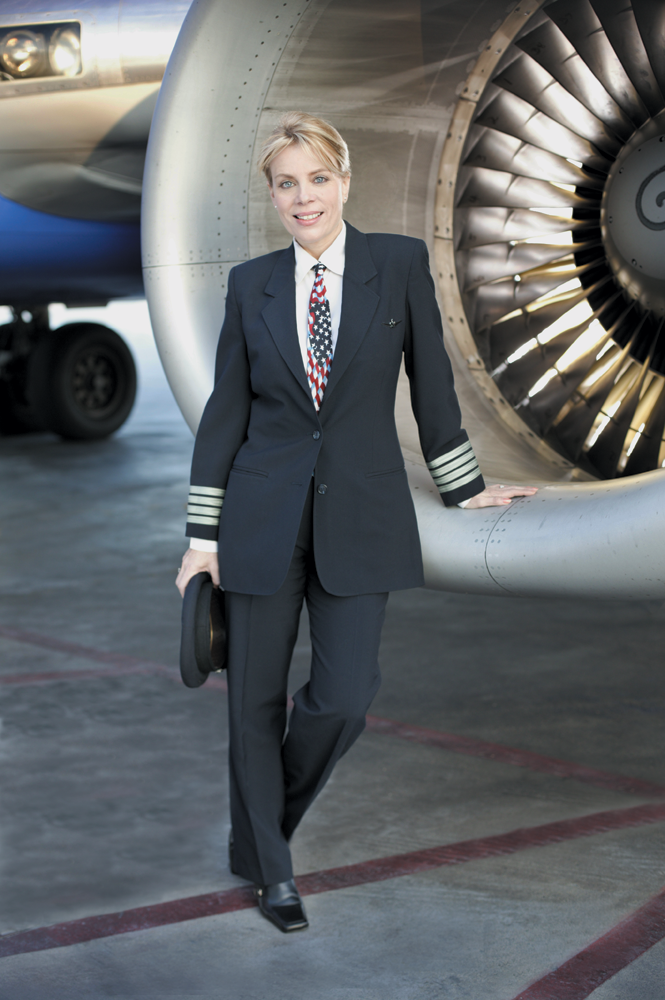
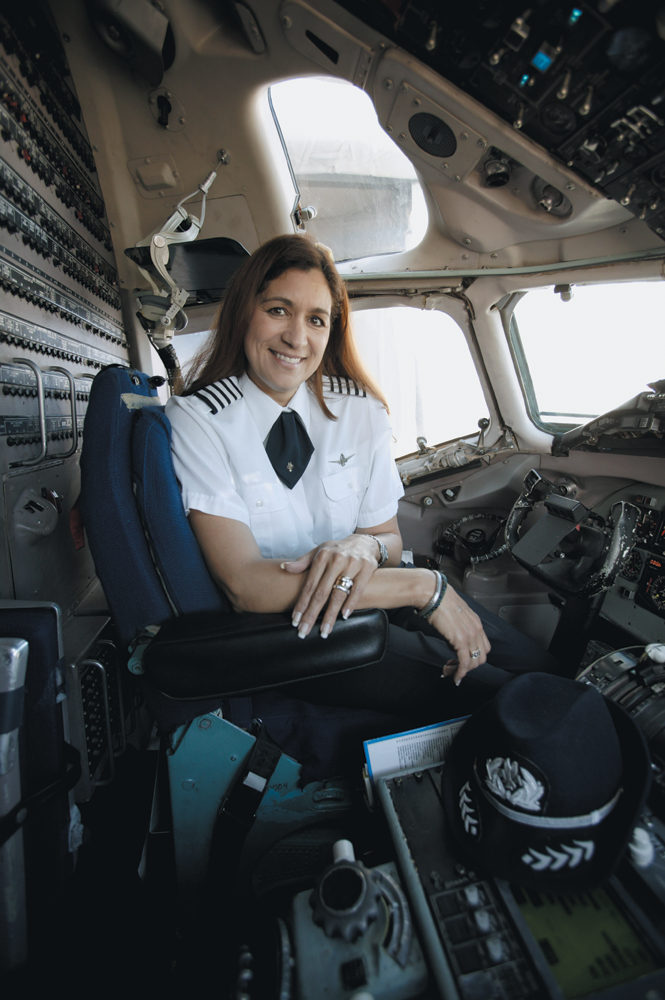








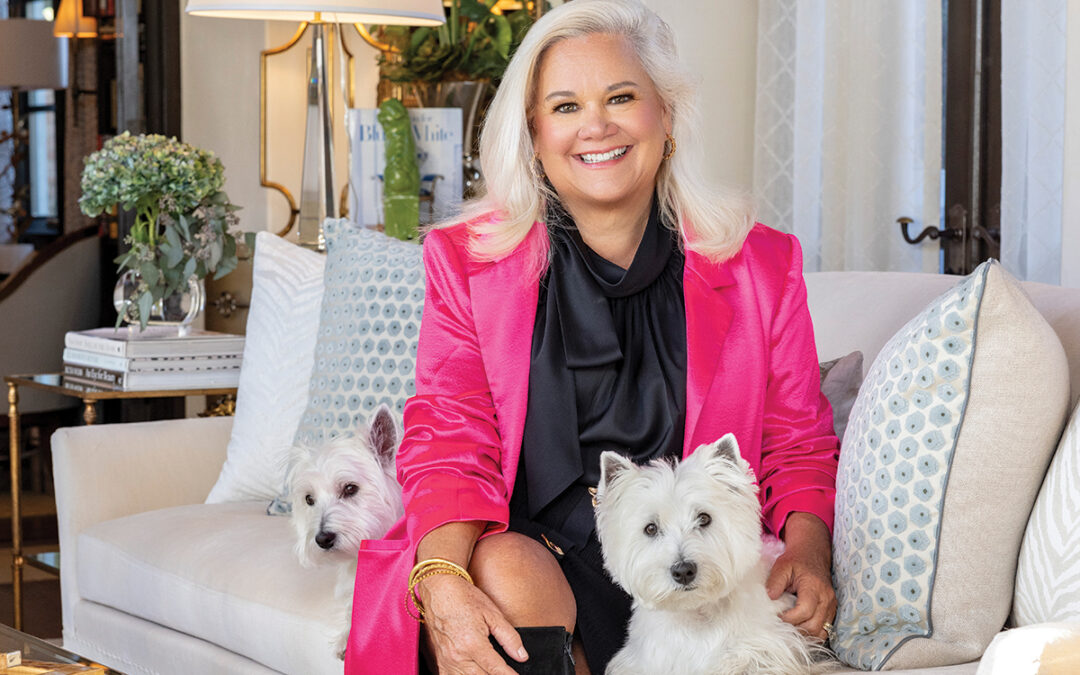
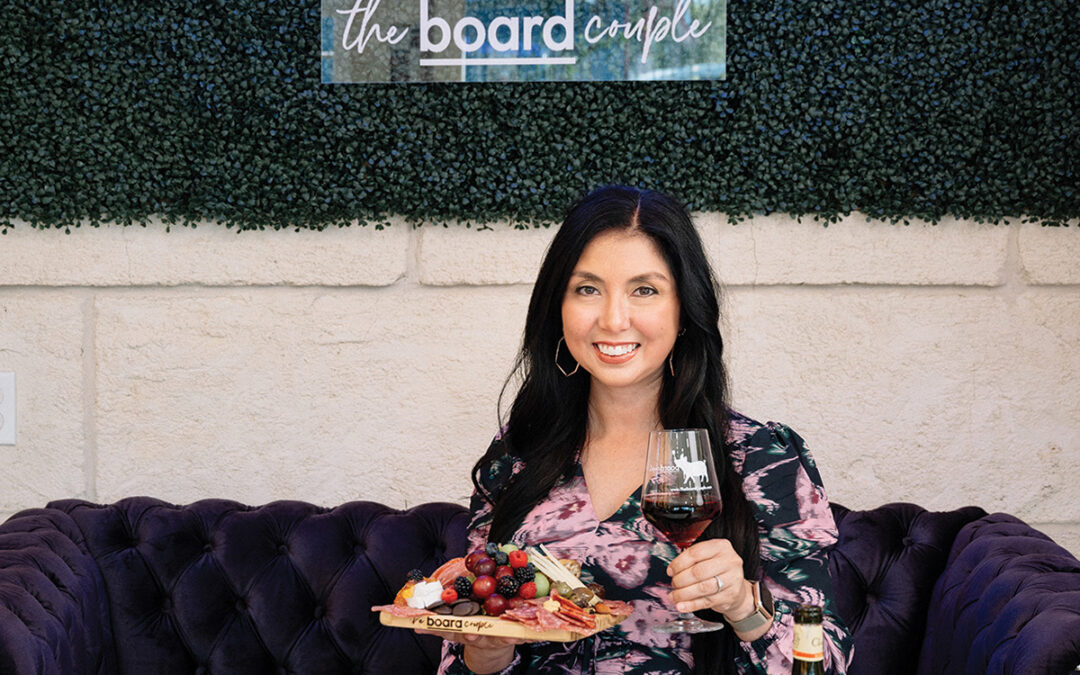
0 Comments